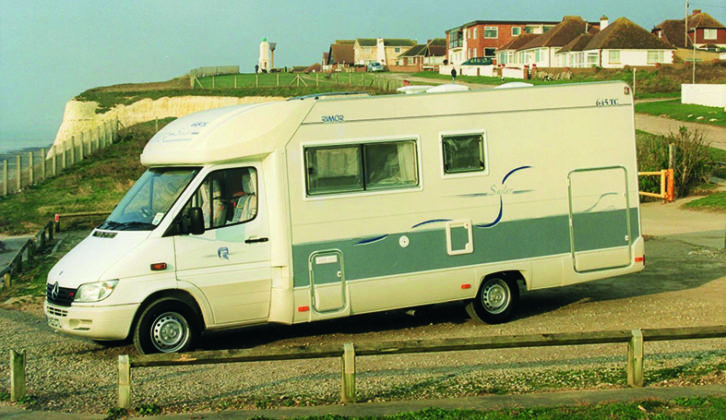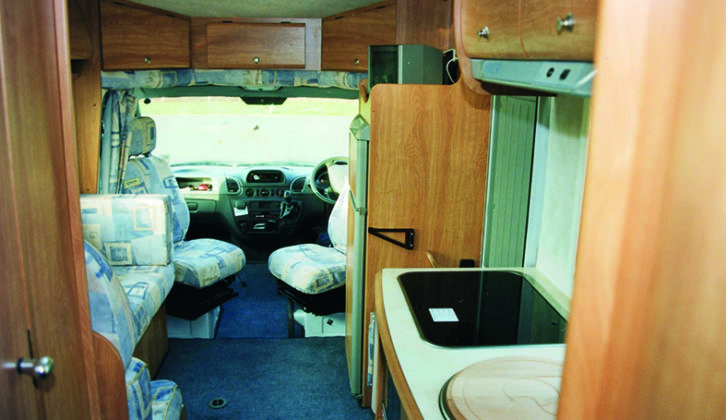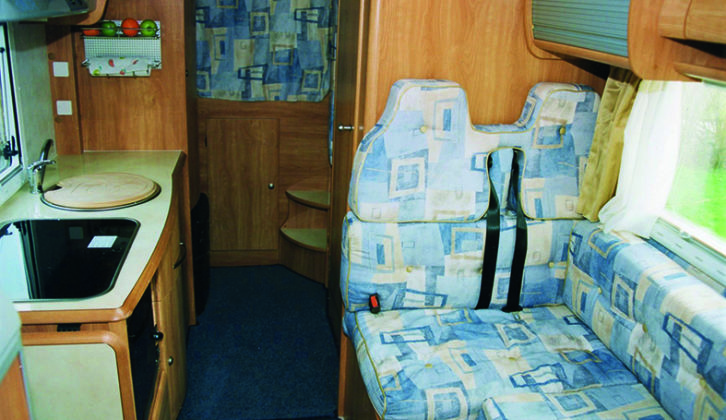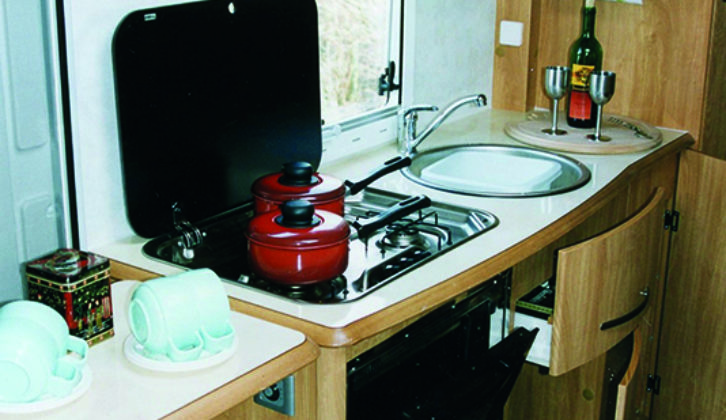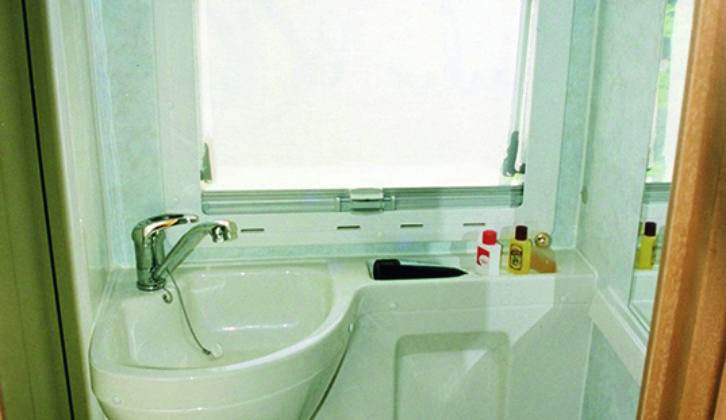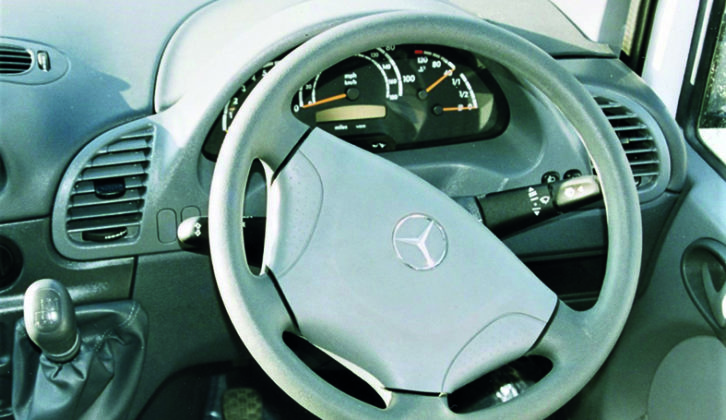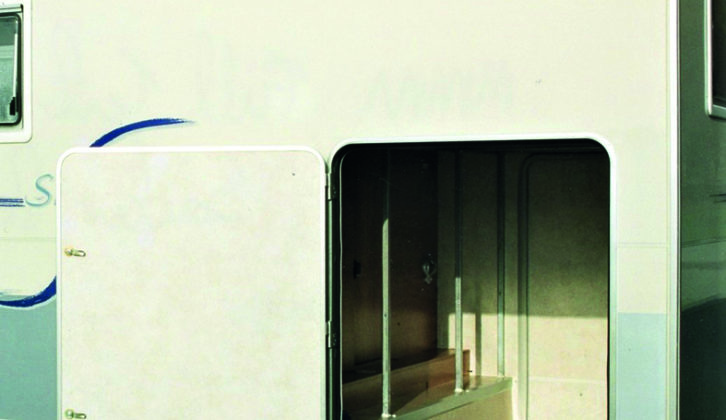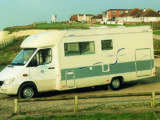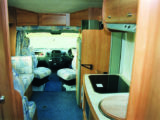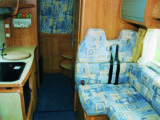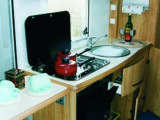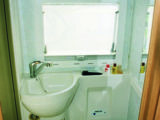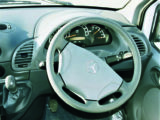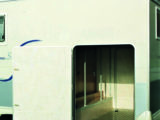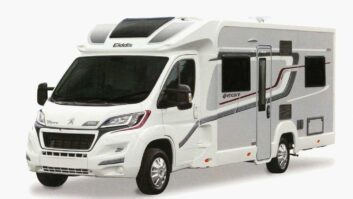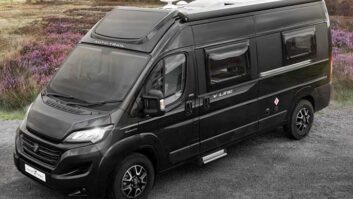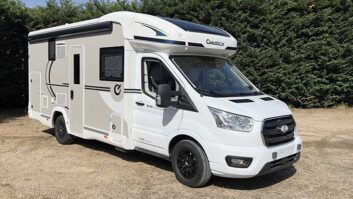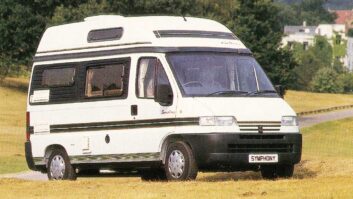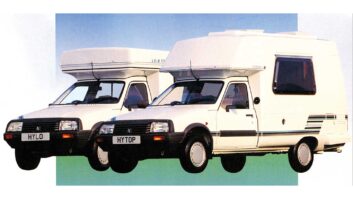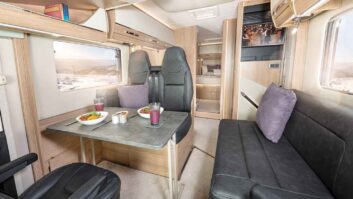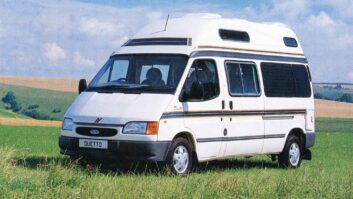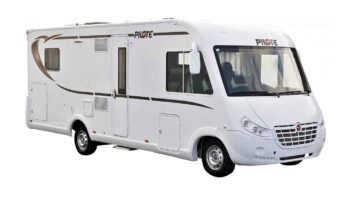For this period of production, the Siena-based Rimor Autocaravan Company was family owned and managed, under the direction of its founder, Luano Niccolau.
The fact that it was an independent firm among many others belonging to two global groups gave rise to fresh thinking and a vehicle that was notably different to mainstream offerings.
The most significant difference was in the method of mounting the coachbuilt body onto the chassis. Conventionally this is achieved by fixing it directly to the original ladder chassis with (perhaps) the addition of one or two outriggers.
Rimor claimed that this practice put an uneven load on the underpinnings, potentially causing the body to flex and joints to open, and sometimes resulting in the dreaded water ingress.
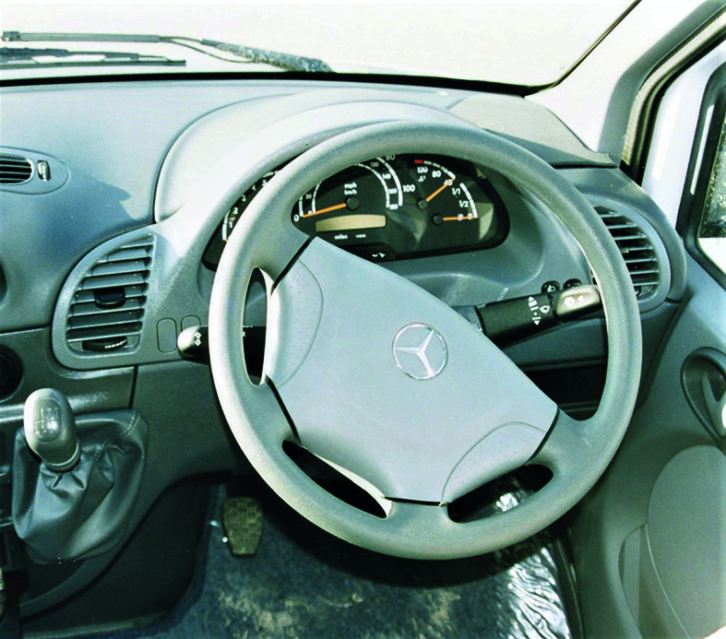
To address this question, Rimor designed a galvanised box-section sub-chassis to go between the base vehicle and the coachbuilt body, achieving a more evenly spread load. Certainly, I heard none of the usual creaks and groans from the coachwork, no matter what speed I drove or how I changed direction over the undulating and uneven pavé test track.
Previously its flagship coachbuilt was the Luton overcab Superbrig. Sailer is in essence a Superbrig, with a lower-profile overcab moulding.
The Sprinter-based Sailer models numbered just two, although one of them – the 645TC – outsold all the rest of the Transit-based ones put together.
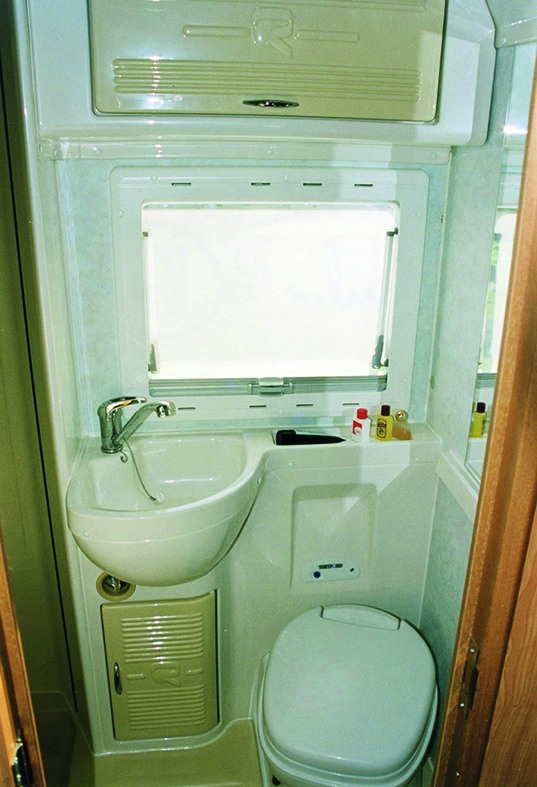
Confusingly, the Sailer with the higher model number designation is the shorter of the duo. Stretching the tape to 6.51m is the M/LWB Sailer 686. The layout in the 686 consists of a nearside forward half-dinette with a short inward-facing settee opposite, midships kitchen and wardrobe, all located ahead of a low-level nearside permanent ‘corner’ double bed with washroom alongside.
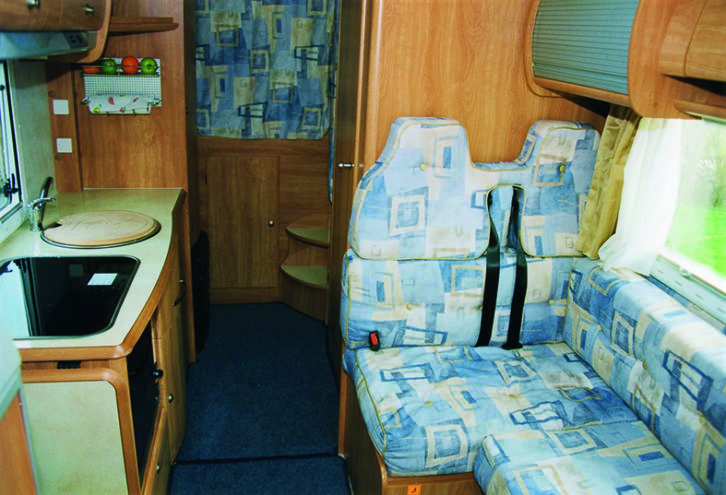
Then UK importer and main agent Southdowns turned a good motorhome into a brilliant one by taking the standard LWB 7.2m 645TC, tweaking the layout and massively improving the basic spec.
On standard models, a nearside double Pullman dinette and a large fridge-freezer are immediately behind the extremely comfortable ISRI cab pews. However, on examples sourced through Southdowns, the Pullman dinette was replaced with an L-shaped convertible settee/two travel seats.
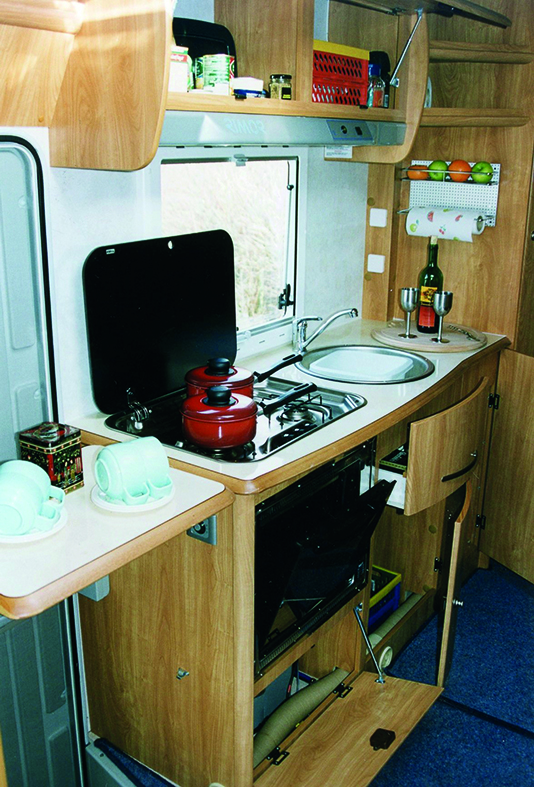
All 645s had a large central offside kitchen, although only Southdowns specified additional Brit-friendly white goods. The 645’s rear section is filled with a permanent and generously sized high-level transverse double bed above a ‘mine’s bigger than yours’ garage with exterior access.
The USP for the 645TC is that garage. Equipped with a large access door on each side, a lowered floor of aluminium chequerplate, tie-down cleats, security poles and lighting, it pushes all of the right buttons.
And there’s more! A loading limit of 200kg should satisfy even the most dedicated clobber carrier.
Fortunately, Southdowns also fitted air suspension assisters to the rear as standard, otherwise the Merc’s rather soft roly-poly ride would have been worsened to the point of inducing sea sickness among Sailer’s sailors, when that garage was fully loaded.
The standard chassis was the Sprinter 313 with the 2.2-litre, four-cylinder TD engine, but Southdowns again upped the ante. This time, it was by specifying the 316 chassis along with Merc’s silky-smooth five-cylinder 2.7-litre TD power unit on all 645TC models.
Merc Sailers were highly desirable when new – especially those from Southdowns – and remain so as a pre-owned purchase. The oft-repeated sentinemt, “Everybody loves a sailor”, could be hijacked here!
WHAT TO LOOK OUT FOR
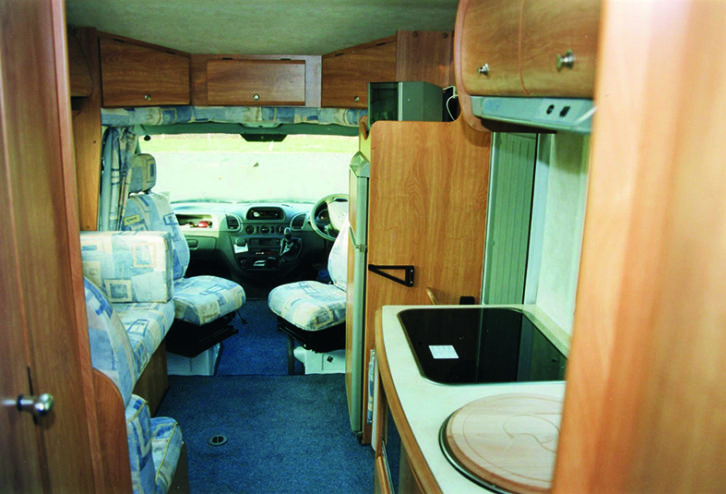
Base vehicle
Always look for a FSH and a long expiry date for the MoT test. In addition, you should check the age of the tyres.
The controversial Sprintshift was an automated manual gearbox that provided a two-pedal drive. Fellow road testers condemned it as jerky and a bit ponderous on fast getaways, say when joining the traffic on a busy roundabout. I disagreed and thought it perfectly acceptable, although not as smooth as a conventional torque converter automatic transmission. Thus, if opting for an auto, make sure that the Sprintshift is for you, by taking it out for a meaningful test drive.
It should also be noted, Sprintshift has proved to be very reliable.
Conversion
Nobody should sign on the dotted line for any pre-owned coachbuilt ‘van without looking for evidence of a recent full habitation service and gas safety check. Also included should be a favourable (written) report on body integrity (damp check).
Furniture was well screwed together, so be suspicious of anything wonky or not functioning properly. The grade of upholstery foam used was softer than that specified by most UK converters so might need replacing if a seat squab cushion ‘bottoms out’ and you can feel the wooden frame underneath.
Your budget should include fitting a new smoke alarm, carbon monoxide alarm, fire extinguisher and fire blanket.
OUR PICK
If you are looking for a lower-level permanent bed, the Sailer 686. However, most original Sailer purchasers went for the 645TC, predominantly for that spacious garage. The 645 would be our choice, but we’d prefer one with the exceptionally smooth 2.7-litre engine.
WHAT TO PAY
Private examples are available at prices from £17,500. Currently a 2004 645TC is for sale at £21,995. It is LHD and to a lower spec than those bought from Southdowns. On the Autotrader website, there is a 2006 fully loaded Sprinter 316 645TC with the 2.7-litre engine and Sprintshift transmission, 80,000 miles recorded and an asking price of £26,000.
Sailer isn’t made now and currently Rimor is not using the Sprinter base vehicle. The nearest equivalent today is the Ducato-based Superbrig 87 Plus, with an OTR retail price of £63,000.
OR YOU COULD TRY…
The Rimor Superbrig on Mercedes-Benz Sprinter, Rimor Europeo (also on the Mercedes-Benz Sprinter), Rimor Sailer on the RWD Ford Transit, or Kentucky Camp (built by Rimor) on the RWD Ford Transit.
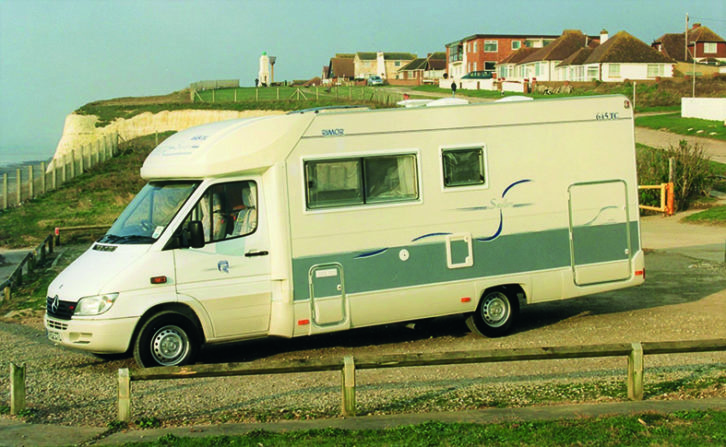
ESSENTIALS
- Rimor Sailer 686 on the M/LWB Mercedes-Benz Sprinter chassis-cab; Sailer 645TC on LWB Mercedes-Benz chassis-cab
- Built in Poggibonsi, Siena, Italy, from 2000-2006
- Low-profile overcab coachbuilt
- Overall length Sailer 686: 6.51m (21′ 4.25″), Sailer 645TC 7.2m (23′ 7.5″)
LIKES
- Huge garage (645TC)
- Galvanised box-section chassis sub-frame
- Rear-wheel drive
- Merc cachet
- Low-level permanent double bed (686)
DISLIKES
- Over-soft ride on models not fitted with airbag rear spring assisters
If you liked this… READ THESE:
Used ‘Van Buyer: Pre-loved stars
If you’ve enjoyed reading this article, why not get the latest news, reviews and features delivered direct to your door or inbox every month. Take advantage of our brilliant Practical Motorhome magazine SUBSCRIBERS’ OFFER and SIGN UP TO OUR NEWSLETTER for regular weekly updates on all things motorhome related.
The Sprinter-based Sailer models numbered just two, although one of them - the 645TC - outsold all the rest of the Transit-based ones put together
